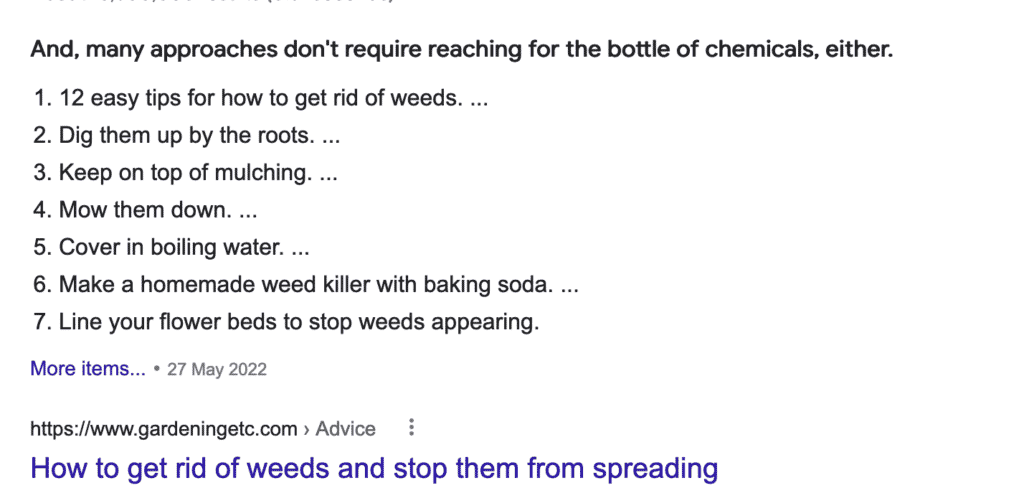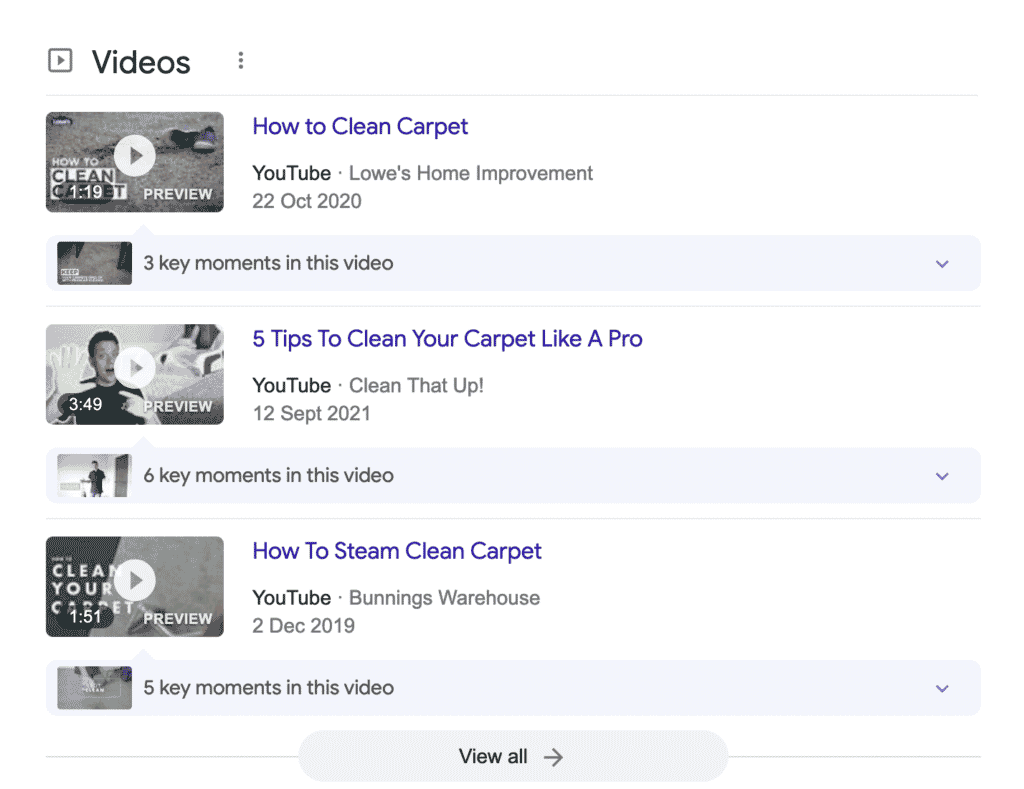First of all, if your business is not writing content on its blog, watch out! I am coming after you. To inspire you. To inform you. To help you. If you are already, great. We hope the below helps you and your business.
Knowing how to write amazing SEO content is one of the most important aspects of maintaining a healthy presence in the digital business world and simply put, essential for search engine optimisation growth. In the modern world, it’s not enough to simply share industry knowledge and tips, with optimised SEO articles being the best way to impact search engines and reach new customers.
91.5% of Google traffic is concentrated on the first page of results, which is why we’ve put together our 17 best practices for SEO content writing so that you can get the most out of your original content.
Content marketing is the only marketing left ~ Seth Godin
Table of Contents:
Word Count – 1500+ Words
Table of Contents Guide
Internal Linkin
List Formatting
Sub Headings & Paragraphs
Encourage Engagement
Power Words
Images & Videos
URL Length
Quizzes & Polls
Catchy Headlines
Know Your Audience
Original & Unique
Be Practical
Keyword Research
Final Thoughts
Use 1500+ Words short
Most blog posts generally agree that the perfect length is between 1,500 and 2,000 words. There’s a perception that SEO articles must be brief to accommodate the short attention span of the digital generation.
In reality, producing under 1,000 words can often indicate a lack of expertise in the field. Of course, the length will vary based on the topic, but your content needs to be scannable, not considerably short.
Another great SEO consideration for content length is how likely it is to generate links to your website – which is the crème de la crème in SEO.
It has been shown in a recent study by Brian Dean at Backlinko when they analysed 900 million blog posts that longer articles generated more inbound backlinks to a website vs shorter content under 1000 words.

Content depth is greater than content length too. You can ultimately write a lot of words without any significant knowledge, expertise, authority or trustworthiness being conveyed in your writing. To be honest, this is an entire post/series on its own.
Use a Linked Table of Contents
Setting out a bookmarked table of contents in your blogs and articles is a great way to increase their SEO value. This allows your readers to find specific information within your writing and help your content appear higher on search engines.
Search engines will place bookmarked sections closer to the top based on relevant searches, feeding more people to your articles and, therefore, your business.
We added one above in this very article to help you “the reader” find and reference a particular point rather than having to dig down deep and find it manually.
Time-saving strategies in your articles will provide more value on their own and improve your overall user experience (UX).
Internal Linking
Where possible, it’s always good practice to internally link to other examples within your own digital content creations.
This demonstrates value to your potential customers, showcasing the breadth and variety of your industry knowledge while also helping Google and other search engines to potentially index new content quicker.
Internal linking provides additional knowledge to search engines and users where to find similar and helpful content and encourages your users to stay longer on your website. Speaking of which, click here to learn more about SEO and how it works?
This is particularly beneficial with important UX/SEO signals such as dwell time, pages per session and improved average time on site.

Internal linking can directly improve your search engine rankings by signally to Google and other search engines where your most important content is located. This is often referred to as “money pages”.
Lists and “How-To” s
One of the best ways to attract readers to your content is by framing it as a list or ‘how-to’ guide. Making your content, a list creates clear, quantifiable steps that the reader can work through, and creating a detailed ‘how-to’ guide has a similar effect.
Research has shown that odd-numbered lists are more likely to engage readers than even-numbered lists. Perhaps those “9 easy steps” could be more valuable than the full 10.
How Tos tap into the research and exploration of the internet itself. People have changed their vernacular and Google has become synonymous with searching. We no longer “search” for answers online, we “Google” them. These searches are often HOW TOs and can easily be converted into list posts. “13 ways to remove weeds from your garden?” is a classic example. “Remove weeds” could be our target keyword.
Below shows a screenshot of Google themselves using lists when searching for the keyword “remove weeds garden”:

Sub-Headings and Paragraphs
As stated earlier, you want your content to be scannable, and an easy way to do this is by using plenty of sub-headings. By clearly earmarking the different parts of your content, it allows your readers to navigate the page more easily, offering you more opportunities to draw attention to SEO keywords.
Keeping paragraphs short and spaced out has a similar effect, ensuring that people don’t feel overwhelmed by your content.
Comments & Engagement
Comments count as additional content for search engines. They can help increase a word count and bring potentially missed SEO keywords into your work if appropriately managed.
A consumer might read a corporate blog to gain knowledge on a topic they aren’t particularly familiar with, and by allowing for comments, you get to share the potentially valuable opinions of a qualified audience.
You have to vet these comments somewhat, ensuring that they’re free from spam while being genuinely helpful before letting them display on your work.
User Generated Content (UGC) is one of our personal favourites because not only is the content free, but it will also improve traffic as there are more words on a page and your own users can spark ideas for new articles in the future.
SEO Writing: Use Power Words in Titles
This is one of our more straightforward SEO content writing guidelines, as it’s focused more on eliciting a reaction from browsing consumers on search engines than manipulating any technical systems.
Power words are persuasive words used in titles to help draw people in. Words and phrases like: best, boost, amazing, powerful, free, and don’t-miss-out all fall under power words, and you can find hundreds more online.
A great article to read is: https://rankmath.com/blog/power-words/
Images & Videos
Including images and videos is a great way to increase the value of your content. It not only breaks up the content from being entirely based on prose but can also demonstrate your points and concepts in more detail.
Suppose you have relevant videos on your own YouTube channel.
In that case, that’s even better, as it feeds people towards more of your content. Captions and titles for videos also offer opportunities for more keyword optimisation.
We also encourage our clients to embed videos into the blog to maximise search engine real estate. “HOW TO” content, “LIST POSTS” etc are often awesome enough as text but explanatory videos can take your article to the next level. Below is a screenshot from Google for a keyword search “how to clean carpet” – Google often and correctly displays videos in their search results (feed style/design these days).

Here is a video I did on the 4 basic fundamentals for every business owner.
Images can also be awesome illustrative assets to prove a point or even break content into more meaningful and digestible chunks.
They can be optimised in Google search to reach more people via image searches and even being displayed in Google’s search results to maximise clicks and traffic to your website.
Short URLs
When it comes to being transparent and direct with your readers, imposing a limit on URL length can do wonders for your SEO.
With a short URL containing a keyword or focus search term, there’s no question about what your blog is about, along with shorter URLs are ranked higher by Google’s algorithm.
Shorter URLs look better in search and are clearly easier to remember.
Evergreen Content
Evergreen content examples include the blog you’re currently reading, in the sense that it’s not attached to any particular year.
This isn’t a catch-all rule, as year-specific content can cause a short-term influx of traffic, especially in fields where trends and fashion are relevant factors. However, evergreen content has more lasting power and can remain a high-ranking result for years.
Evergreen content provides a long-term flow of traffic while those particular keywords are continually being searched. An example of content that is not evergreen would be “2022’s best celebrity engagement rings”. Next year, this will no longer be relevant.

An example of a great evergreen piece of content is “9 ways to improve your content writing”.
The chances of this content becoming redundant is low, and of course depends on how well it is written, how popular etc, but for argument’s sake, let’s say this piece of content performs well, attracts links, and social shares and gets to the top of search results.
Next year, they will most likely continue as links will most likely keep coming and the “link velocity” overall will continue to rise. With evergreen content, the most difficult part is to get your content onto the first for competitive keywords, but once it does, there is a good chance it will continue over the long haul.
Quizzes and Polls
We’ve probably spent too much time answering quiz questions and polls on sites like BuzzFeed and others, ranging from “Which Power Ranger Are You?” to socio-economic issues. Quizzes, questions, and polls are a great way to encourage engagement with your audience.
It allows you to communicate information to them to feel more proactive and involved. By getting them involved, you’re allowing them to feel more in control of the content that they’re absorbing.
Never underestimate how important it is for your audience to add their 2c.
Catchy Headlines
Much like our earlier point about using power words in your titles, you also have to ensure that your headlines are written in a snappy and catchy fashion. Don’t try to fit too much information into your title while including a focus keyword and sticking to a maximum of 80 characters where possible.
Ensure that your title rolls off the tongue when spoken out loud, makes good grammatical sense, and communicates what you’re doing with the content attractively.
Catchy headlines do not have to be clickbait(ish) to be effective. At times hyperbolising your headlines to a dramatic level can turn people off. You want to keep headlines, short, descriptive and helpful.

We love this headline below on https://omegadigital.com.au/case-studies/ecommerce-seo-case-study/ – as this particular client had many SEO tasks which were complex for them to understand the full extent.

Not only did we have to break them down into meaningful tasks for them, but to provide clarity and convert the technical jargon into an easy-to-understand explanation they could act upon.
We delivered great results by the way which you learn more about here.
Know Your Audience (Consumer vs. Business)
When writing content, you don’t have to write every piece from the perspective of providing information to service users and consumers.
Business-focused articles are similarly effective (just look at us!). Showing that you have knowledge that other businesses can use for their own good will help to build your reputation in the industry, increasing your frequency of appearing in other businesses’ content.
Write with your audience in mind to create the best possible user experience.
Unique Research & Original Presentation
Many blogs and articles on the internet can feel like they’ve been copied and pasted from other sites and businesses, so to stand out, you need to take the time to do unique research.
Along with this, you also need to present the information you have in an original way. Being unique in your research also extends to how you use keywords, but more on that later.
Practicality
This comes with knowing your audience, but try to make sure that people can use the content you put out in a practical sense.
If you’re writing for the general consumer, don’t create steps and tips requiring much technical prowess or knowledge.
If you’re writing for business owners, don’t feel like you have to simplify all of the jargon. Make your advice clear, direct, and easy to put into practice. Then the content will become a go-to option for interested parties.
If I cannot use your content, why will I return to read your future posts and content? Be practical. Be real.
Keyword Research
One of the essential things when it comes to solid SEO practices is the use of proper keywords and search terms. These are words and phrases used in search engines by people looking for information.
By researching them and integrating them into your content, you can help your content rise up the rankings effectively.
Remember, not all keywords are created the same, and the highest volume choices may not always be the best for you.
Keyword research can be completed on tools like Semrush, AHREFS, Google Keyword Planner and others while companies like our own offer comprehensive SEO keyword research services.
Final Thoughts
SEO is more important than ever, but if you follow our advice, you could make yourself a real player in the digital content landscape.
Whether you are trying to see results within six months or over a couple of years, stick to our guidance, do your research, and put in the effort. You’ll be ranking high soon enough.
Do you have a question or would like to share your feedback? Please leave a comment below ???





